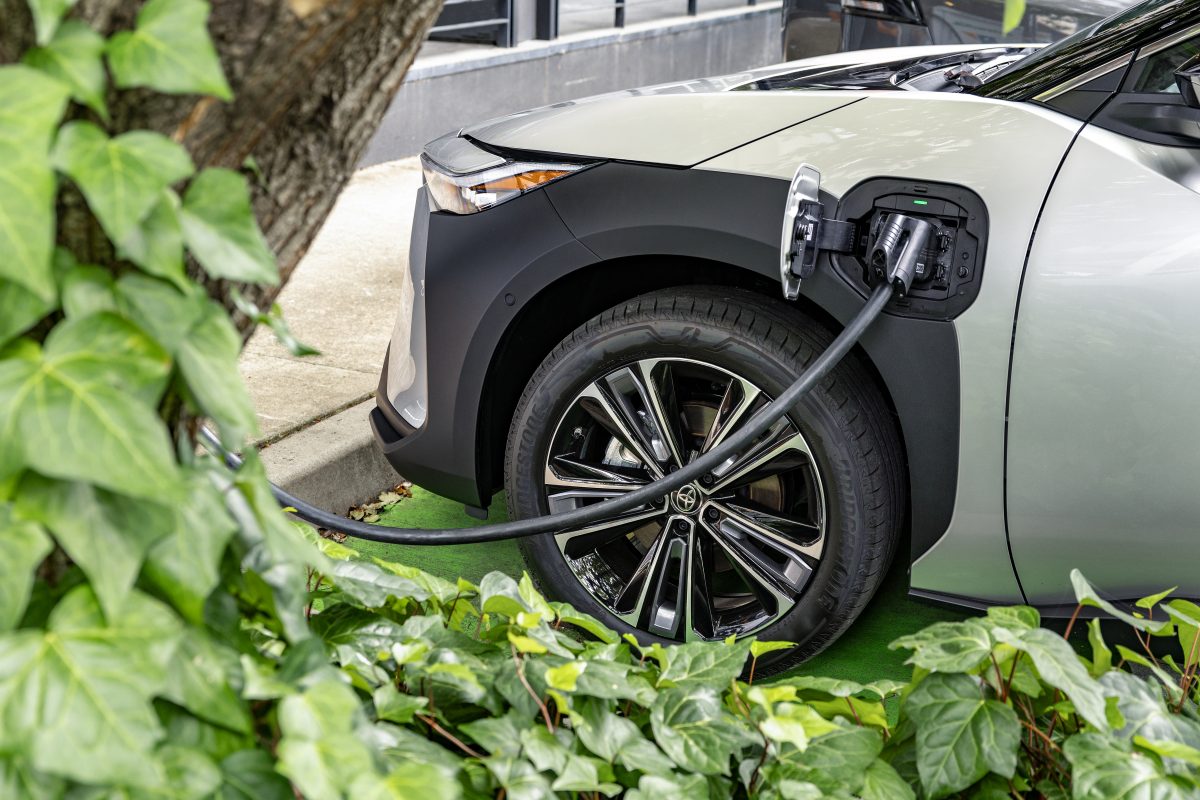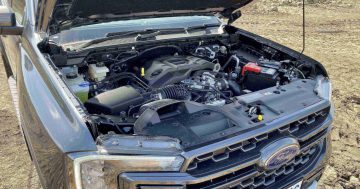
A different kind of filling up. Photo: Toyota Australia.
Who, or what, exactly will be paying for the roads in 30 years’ time? It’s a question this week’s Budget has left unanswered.
The Albanese Government’s proposed New Vehicle Efficiency Standard (NVES) swept through Parliament on Thursday without protest or amendment, two days after it was allocated $154.5 million over six years – and then $12.6 million per year ongoing – in the 2024-25 Budget.
You’ll have heard the headlines.
Russia is on its own now as the only developed country in the world to require no emissions standards from its new cars.
From January 2025, car brands will have four years to bring their average annual emissions down to no more than 58g CO2/km for their passenger cars and 110g CO2/km for light commercial vehicles (including large 4WDs and dual-cab utes), or pay a $100 penalty per gram over the limits.
This is designed to reduce emissions from new passenger vehicles by more than 60 per cent by 2030, and roughly halve the emissions of new light commercial vehicles over the same period. By 2050, it will have saved 321 million tonnes of CO2 from entering the atmosphere.
Close to the all-important hip pocket, Australian motorists are predicted to save around $95 billion in fuel costs by 2050.
But that’s provided you’re in one of the new EVs. For those who are left, it might be about to get a lot more expensive.
First, there are the fines.
The best-selling vehicle in Australia is the Ford Ranger and, in its most efficient four-cylinder guise, it emits 189g of CO2/km. If Ford can’t bring this figure down, or import plug-in hybrid or EV models by 2029 to compensate, by 2029 it will pay a fine of $7900 per Ranger.
Many of the big players, including Isuzu and Toyota, have already said they’ll have to pass this cost on to the consumer (in what they dubbed the ‘ute tax’).

Ford will be paying a $7900 fine per Ranger if they can’t work out a way to slash average emissions by 2029. Photo: James Coleman.
Second, there is fuel excise.
The Budget estimates the NVES will result in a $470 million total reduction in fuel excise collections over its first three years.
When the former Coalition government halved the fuel excise rate to 22.1 cents per litre ahead of the 2022 election, that cost them $5.6 billion in foregone revenue. Imagine the figure when motorists are paying $95 billion less at the bowser by 2050.
A road-user charge, applied to EVs on a per-kilometre basis, looks like the obvious choice to make up this shortfall.
The Victorian Government tried this in 2021, when it imposed a 2.8 cent levy for every kilometre driven by an electric or hydrogen car, and 2.3 cents per kilometre for plug-in hybrid vehicles.
Within two years, the High Court of Australia had thrown it out and ruled any future road-user charge was up to the Commonwealth.

The High Court of Australia ruled Victoria’s road-user charge was unconstitutional. Photo: Michelle Kroll.
It’s why the Australian Automobile Association (AAA) was disappointed to not see mention of it in this year’s Budget.
Ahead of the reveal on Tuesday, AAA managing director Michael Bradley said they would be looking to see “whether the government has a plan to ensure that everybody who uses our roads is paying their share toward their upkeep”.
The papers outlined an investment of $120 billion in road and rail projects across the country, followed by a continued annual investment of $1 billion in the ‘Roads to Recovery’ program, $150 million for the ‘Black Spot Program’, $200 million for the ‘Safer Local Roads and Infrastructure Program’ and $32 million over six years for the National Road Safety Data Hub.
Included in the NVES figures, there was also $60 million to roll out EV chargers at car dealerships across the country.
It’s understood the government has postponed any decision on a road-user charge until at least after the next election, not wanting to put off EV buyers just as they’re trying to encourage them.
“It was disappointing that Australians heard nothing about the government’s plan for a more affordable, sustainable, and equitable system for paying for our roads,” Mr Bradley said.
All in all, the AAA described the Budget as a “missed opportunity”.
Mr Bradley added the outdated “legacy” import tariffs and Luxury Car Tax were only making the situation worse.
“Abolishing these protectionist measures must form part of a broader reform of tax arrangements, which should seek to ensure all Australians pay their fair share toward the upkeep of the road system and spread the cost burden more evenly across the community.”

The Luxury Car Tax threshold was increased to $89,332 for “fuel-efficient vehicles” in 2023-24. Photo: James Coleman.
Import tariffs and Luxury Car Tax (LCT) are expected to raise $1.69 billion this financial year and while this will drop to $1.11 billion in 2024-25, it will then head back the other way to net $1.33 billion in 2027-28.
The Australian Automotive Dealer Association (AADA), also based in Canberra, also called for a “comprehensive” overhaul of automotive taxes.
“Particularly the Luxury Car Tax which often applies to more efficient vehicles and applies to optional features which discourage consumer uptake of safety features,” AADA CEO James Voortman said.
Original Article published by James Coleman on Riotact.











